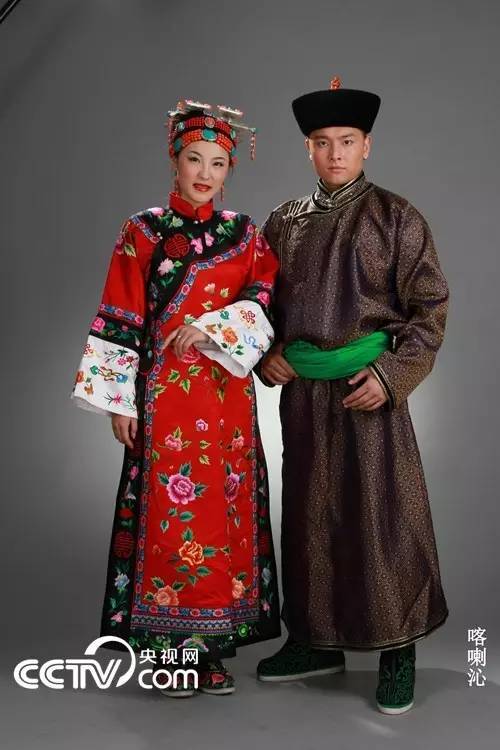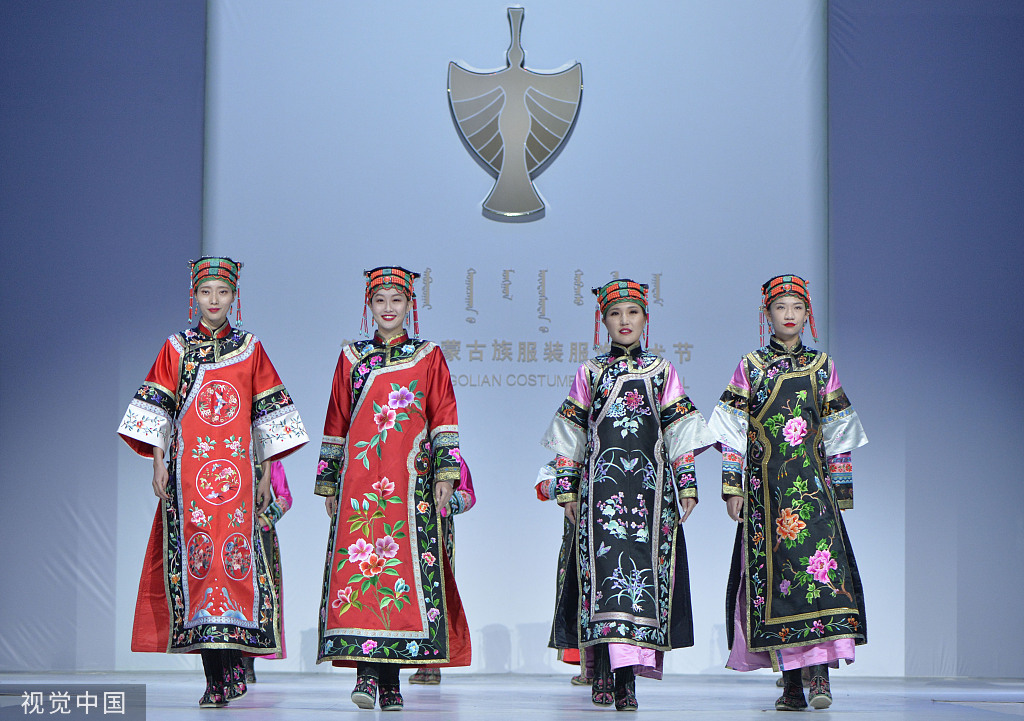Harqin


Origin of the Tribe
The Harqin Mongols who live in the Northeast of Inner Mongolia today originate from two clans: the one is the Uriyangqa, who moved from the north in early Ming Dynasty (1368-1644) and are descended from Jelme (a famous general under Genghis Khan ) and his subjects; the other is Harqin, coming from the Ordos Plateau, who are derived from an ancient Mongolian tribe Kipchak. In the 1530s, the Harqin clan defeated the Uriyangqa clan then the two formed an alliance by marriage. In 1628, the Harqin submitted itself to the Later Jin and was then reorganized into three banners, the Harqin Left Wing Banner, Harqin Central Banner, and Harqin Right Banner.
Features of the Clothing
Similar to the Horqin, the Harqin costume style is also greatly influenced by Manchu and Han culture. Women like wearing flowers on both temples, which is also the habit of Manchu women. In addition, their preference for red colors and body-fitting clothing indicates the integration of farming lifestyle.
Dressing Customs
Maids usually keep bangs and a braid hanging down their back; apart from robes with waistbands, they also wear a bracelet on the right arm without earrings. Married women, however, are supposed to wear robes matched with waistcoats, keep their hair in a high bun with hairpins and ornaments like rings, bracelets and earrings. Whatever her age is, a married woman can always wear red flowers in hair as long as her husband is alive.






